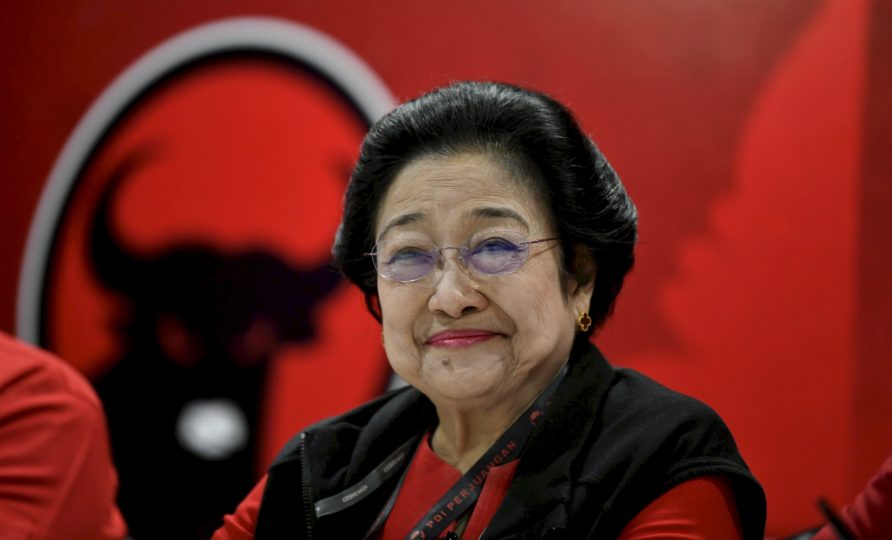- Hello Reader Kabinetrakyat!
- Introduction
- Strengths of Garcia Miranda Law
- 1. Modernization of the Teaching Profession
- 2. Establishment of the Professional Regulation Commission
- 3. Increased Accountability for Teachers
- 4. Improvement of the Educational System
- 5. Better Employment Opportunities for Educators
- 6. Increased Support for Teachers
- 7. Improved Quality of Education for Students
- Weaknesses of Garcia Miranda Law
- Table: Garcia Miranda Law Details
- Frequently Asked Questions (FAQ)
- 1. What is Garcia Miranda Law?
- 2. Who sponsored Garcia Miranda Law?
- 3. What is the goal of Garcia Miranda Law?
- 4. What is the Professional Regulation Commission (PRC)?
- 5. What is the Licensure Exam for Teachers (LET)?
- 6. What are the strengths of Garcia Miranda Law?
- 7. What are the weaknesses of Garcia Miranda Law?
- 8. What is the cost of the Licensure Exam for Teachers?
- 9. Does Garcia Miranda Law address the issue of limited access to education for underprivileged students?
- 10. What is the role of standardized testing in Garcia Miranda Law?
- 11. Does Garcia Miranda Law provide mechanisms for professional development or advancement?
- 12. Does Garcia Miranda Law have the potential to improve the quality of education in the Philippines?
- 13. What is the impact of Garcia Miranda Law on the teaching profession in the Philippines?
- Conclusion
- Disclaimer
Hello Reader Kabinetrakyat!
If you are interested in learning more about Garcia Miranda Law, you’ve come to the right place. In this article, we will dive deep into the strengths and weaknesses of this law and explain all the crucial details related to it.
Introduction
Garcia Miranda Law, also known as Republic Act No. 10912, is an act of the Congress of the Philippines that aims to regulate and modernize the practice of teaching in the country. The law was signed into effect on July 21, 2016, by President Rodrigo Duterte to address the gap in the education system and enhance the quality of education in the Philippines.
The law is named after the two primary sponsors of the Act, Senator Win Gatchalian and Representative Ann Hofer Garcia. The act outlines specific changes in the teaching profession, including the establishment of a new regulatory body, the Professional Regulation Commission (PRC), and a new set of tests for teacher certification known as the Licensure Exam for Teachers (LET).
The primary goal of Garcia Miranda Law is to improve the quality of teaching in the Philippines. The law aims to ensure that all teachers have the necessary skills and knowledge to provide quality education to students and raise the standards of teaching in the country.
In the next few paragraphs, we will explore the strengths and weaknesses of Garcia Miranda Law in detail.
Strengths of Garcia Miranda Law
1. Modernization of the Teaching Profession
Garcia Miranda Law aims to modernize the teaching profession in the Philippines by establishing new standards and certifications for teachers. The law provides a framework for continuous education and development, ensuring that teachers are always up-to-date with the latest teaching methodologies and best practices.
2. Establishment of the Professional Regulation Commission
The Professional Regulation Commission (PRC) is the new regulatory body established under Garcia Miranda Law. The PRC is responsible for ensuring that all teachers meet the minimum qualifications and standards set by the law. This new regulatory framework ensures that teachers are accountable for their actions and meet the necessary standards to teach effectively.
3. Increased Accountability for Teachers
Garcia Miranda Law holds teachers accountable for their actions and requires them to undergo continuous education and training. The law mandates that all teachers pass the Licensure Exam for Teachers (LET), ensuring that only the best and most qualified teachers are certified to teach in the Philippines.
4. Improvement of the Educational System
Garcia Miranda Law has the potential to significantly improve the educational system in the Philippines. The law aims to establish a culture of continuous development and improvement, ensuring that the educational system remains relevant and up-to-date with the latest teaching methodologies and standards.
5. Better Employment Opportunities for Educators
Garcia Miranda Law provides new opportunities for educators in the Philippines, with the establishment of the PRC and the Licensure Exam for Teachers. These new regulatory and certification systems make it easier for teachers to demonstrate their qualifications and skills, making it easier to find employment opportunities both in the Philippines and abroad.
6. Increased Support for Teachers
Garcia Miranda Law recognizes the importance of supporting teachers in their profession. The law provides mechanisms for teachers to voice their concerns and complaints, ensuring that their rights and interests are protected.
7. Improved Quality of Education for Students
The ultimate goal of Garcia Miranda Law is to improve the quality of education for students in the Philippines. The law aims to ensure that all teachers are qualified and competent, and that they have the necessary skills and knowledge to provide quality education to their students.
Weaknesses of Garcia Miranda Law
1. Implementation Challenges
Garcia Miranda Law faces several challenges in its implementation, including a lack of resources and institutional capacity. Implementing the new regulatory framework and certification systems will require a significant amount of investment in terms of human and financial resources.
2. Resistance from Teachers’ Groups
Some teachers’ groups have shown resistance to the new regulatory and certification systems established under Garcia Miranda Law. They argue that the new systems are too complex and bureaucratic, and that they could lead to arbitrary evaluation and dismissal of teachers.
3. Lack of Unified Education Standards
The lack of unified education standards in the Philippines poses a significant challenge to the implementation of Garcia Miranda Law. There is currently no consensus on the minimum qualifications and standards that all teachers should meet, making it difficult to establish a unified regulatory framework.
4. Cost Burden for Teachers
The new certification systems established under Garcia Miranda Law put a significant cost burden on teachers. The Licensure Exam for Teachers (LET) requires teachers to pay a significant fee, making it difficult for some teachers to afford the certification.
5. Limited Access to Education for Underprivileged Students
Garcia Miranda Law does not address the issue of limited access to education for underprivileged students in the Philippines. The law does not provide any mechanisms for improving access to education for marginalized communities, leaving many students behind.
6. Limited Career Growth Opportunities
Garcia Miranda Law does not address the issue of limited career growth opportunities for teachers in the Philippines. The law does not provide any mechanisms for professional development or advancement, leaving many teachers without the opportunity for career growth or promotion.
7. Overreliance on Standardized Testing
Garcia Miranda Law relies heavily on standardized testing to evaluate teachers and certify them to teach. This approach has been criticized by some educators, who argue that it is too narrow and does not take into account the broader range of skills and knowledge that teachers need to be effective.
Table: Garcia Miranda Law Details
| Law Name | Garcia Miranda Law |
|---|---|
| Republic Act Number | No. 10912 |
| Sponsors | Senator Win Gatchalian and Representative Ann Hofer Garcia |
| Enacted By | Congress of the Philippines |
| Date of Effect | July 21, 2016 |
| Primary Goal | To improve the quality of teaching in the Philippines |
| Establishment | Professional Regulation Commission (PRC) |
| Certification | Licensure Exam for Teachers (LET) |
Frequently Asked Questions (FAQ)
1. What is Garcia Miranda Law?
Garcia Miranda Law, also known as Republic Act No. 10912, is an act of the Congress of the Philippines that aims to regulate and modernize the practice of teaching in the country.
2. Who sponsored Garcia Miranda Law?
The law was sponsored by Senator Win Gatchalian and Representative Ann Hofer Garcia.
3. What is the goal of Garcia Miranda Law?
The primary goal of Garcia Miranda Law is to improve the quality of teaching in the Philippines.
4. What is the Professional Regulation Commission (PRC)?
The Professional Regulation Commission (PRC) is the regulatory body established under Garcia Miranda Law to ensure that all teachers meet the minimum qualifications and standards set by the law.
5. What is the Licensure Exam for Teachers (LET)?
The Licensure Exam for Teachers (LET) is a new set of tests for teacher certification established under Garcia Miranda Law.
6. What are the strengths of Garcia Miranda Law?
The strengths of Garcia Miranda Law include the modernization of the teaching profession, the establishment of the PRC, increased accountability for teachers, improvement of the educational system, better employment opportunities for educators, increased support for teachers, and improved quality of education for students.
7. What are the weaknesses of Garcia Miranda Law?
The weaknesses of Garcia Miranda Law include implementation challenges, resistance from teachers’ groups, lack of unified education standards, cost burden for teachers, limited access to education for underprivileged students, limited career growth opportunities, and overreliance on standardized testing.
8. What is the cost of the Licensure Exam for Teachers?
The cost of the Licensure Exam for Teachers varies, but it is a significant fee that puts a burden on teachers.
9. Does Garcia Miranda Law address the issue of limited access to education for underprivileged students?
No, Garcia Miranda Law does not address the issue of limited access to education for underprivileged students in the Philippines.
10. What is the role of standardized testing in Garcia Miranda Law?
Garcia Miranda Law relies heavily on standardized testing to evaluate teachers and certify them to teach.
11. Does Garcia Miranda Law provide mechanisms for professional development or advancement?
No, Garcia Miranda Law does not provide any mechanisms for professional development or advancement for teachers in the Philippines.
12. Does Garcia Miranda Law have the potential to improve the quality of education in the Philippines?
Yes, Garcia Miranda Law has the potential to significantly improve the quality of education in the Philippines by setting new standards and certifications for teachers.
13. What is the impact of Garcia Miranda Law on the teaching profession in the Philippines?
Garcia Miranda Law has the potential to modernize and improve the teaching profession in the Philippines by establishing new standards and regulations for teachers.
Conclusion
Garcia Miranda Law is a crucial step towards modernizing and improving the quality of teaching in the Philippines. This law has its strengths and weaknesses, and it is crucial to understand both sides to evaluate its impact on the Philippine education system.
While there are challenges to the implementation and adoption of Garcia Miranda Law, the long-term benefits of improving the quality of education for students and creating better employment opportunities for educators cannot be ignored.
We encourage our readers to follow the developments related to Garcia Miranda Law closely and play an active role in shaping the future of teaching in the Philippines.
Disclaimer
This article is for informational purposes only and should not be construed as legal advice. The information provided herein is subject to change without notice, and we do not undertake any obligation to update the information contained in this article.
Readers are advised to consult their legal advisors or other qualified professionals regarding any specific legal questions or concerns.



